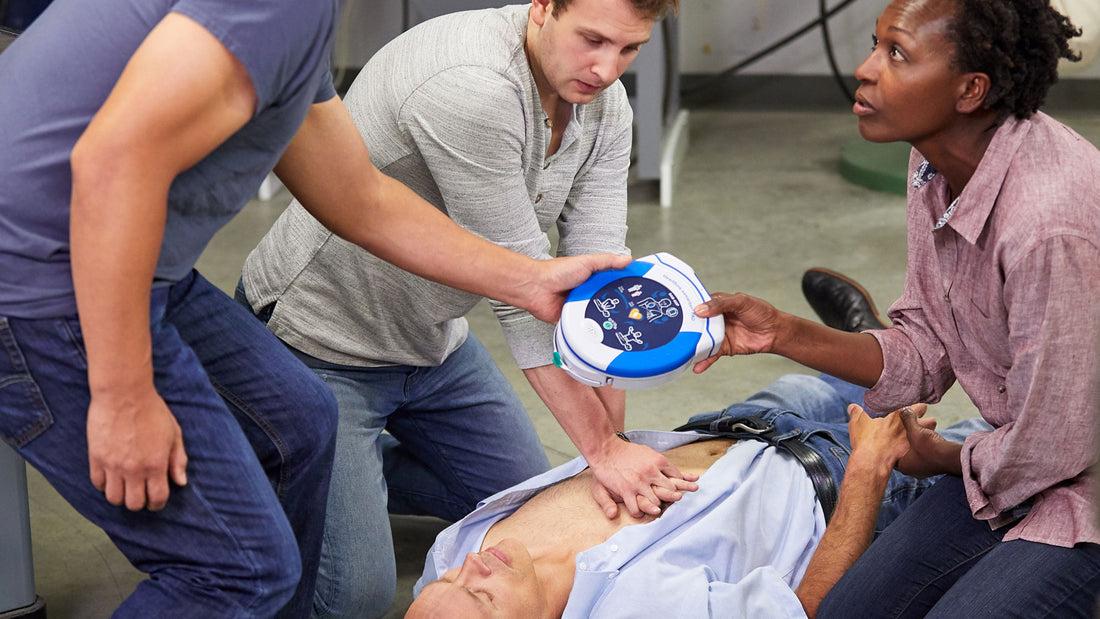When it comes to selecting an Automated External Defibrillator (AED) for your facility or organization, one of the key decisions you'll need to make is whether to opt for a fully automatic or semi-automatic model. Both types of AEDs are designed to deliver life-saving shocks to individuals experiencing sudden cardiac arrest, but there are some important differences to consider.
What is the Difference Between Fully Automatic and Semi Automatic AEDs?
A fully automatic AED is designed to analyze the heart rhythm of a patient and deliver a shock if necessary without any intervention from the user. This means that once the pads are attached, the device will automatically assess the situation and administer a shock if it detects a shockable rhythm.
On the other hand, a semi-automatic AED also analyzes the heart rhythm and prompts the user to deliver a shock by pressing a button if needed. The user must manually initiate the shock delivery process after receiving the prompt from the device.
Which AED is More User-Friendly?
For individuals who may not have extensive medical training or experience using AEDs, a fully automatic model may be more user-friendly. With a fully automatic AED, there is no need to worry about pressing the shock button at the right time, as the device takes care of this automatically.
However, some users may prefer the control and reassurance that comes with a semi-automatic AED, as they have the final say in when to deliver the shock. This can be particularly important in high-stress situations where clear communication and decision-making are crucial.
Considerations for Your Specific Needs
When deciding between a fully automatic and semi-automatic AED, it's important to consider the specific needs and capabilities of your organization. Factors such as the level of training of potential users, the likelihood of multiple rescuers being present, and the intended use of the device can all influence your decision.
When it comes to selecting an Automated External Defibrillator (AED) for your organization or community, one of the key decisions you'll need to make is whether to opt for a fully automatic or semi-automatic device. Both types of AEDs are designed to deliver life-saving shocks to individuals experiencing sudden cardiac arrest, but there are some important differences to consider.
What is the Difference Between Fully Automatic and Semi Automatic AEDs?
A fully automatic AED is designed to deliver a shock to a patient without the need for the rescuer to press a button. Once the device analyzes the heart rhythm and determines that a shock is needed, it will automatically administer the treatment. On the other hand, a semi-automatic AED requires the rescuer to press a button to deliver the shock after the device has analyzed the heart rhythm.
Which Type of AED is More User-Friendly?
While both fully automatic and semi-automatic AEDs are designed to be user-friendly, some individuals may find the fully automatic option easier to use in high-stress situations. With a fully automatic AED, there is no need to worry about pressing the shock button at the right time, which can be a relief for individuals who may be less experienced or confident in their ability to perform CPR.
Are There Any Legal or Regulatory Considerations?
It's important to note that the choice between a fully automatic and semi-automatic AED may be influenced by legal or regulatory requirements in your area. Some jurisdictions have specific regulations regarding the use of AEDs, including whether fully automatic devices are permitted in certain settings. Be sure to familiarize yourself with any relevant laws or guidelines before making a decision.
Which AED Should You Choose?
When it comes to selecting an Automated External Defibrillator (AED) for your organization or community, the decision between a fully automatic or semi-automatic device is crucial. Both options have their own set of benefits and considerations, so how do you determine which one is the best choice for your needs?
What is the Difference Between Fully Automatic and Semi Automatic AEDs?
A fully automatic AED delivers a shock to the patient without the need for the rescuer to press a button. Once the device analyzes the heart rhythm and determines a shock is necessary, it will administer the treatment automatically. On the other hand, a semi-automatic AED requires the rescuer to press a button to deliver the shock after the device has analyzed the heart rhythm.
Which AED is Easier to Use?
Studies have shown that in high-stress situations, such as a sudden cardiac arrest, individuals may hesitate or forget to press the shock button on a semi-automatic AED. In contrast, a fully automatic AED eliminates this potential for human error by delivering the shock automatically. This can be especially beneficial for untrained bystanders or individuals who may be hesitant to intervene.
What are the Considerations for Choosing Between the Two?
While a fully automatic AED may seem like the obvious choice for ease of use, some organizations prefer semi-automatic devices due to the ability to have more control over when the shock is delivered. Additionally, some regions or countries may have regulations that dictate the type of AED that must be used in certain settings.
Conclusion
Ultimately, the decision between a fully automatic and semi-automatic AED should be based on the specific needs and circumstances of your organization or community. Consider factors such as the level of training of potential rescuers, regulatory requirements, and the ease of use in high-stress situations. By carefully evaluating these factors, you can choose the AED that is best suited to provide life-saving treatment in the event of a sudden cardiac arrest.
Ultimately, the decision between a fully automatic and semi-automatic AED will depend on your specific needs and preferences. If ease of use and simplicity are top priorities, a fully automatic device may be the best choice for your organization. However, if you prefer to have more control over the timing of the shock delivery, a semi-automatic AED could be the right option for you.
Whichever type of AED you choose, the most important thing is to ensure that your organization is equipped with a reliable and effective device that can help save lives in the event of a cardiac emergency.

